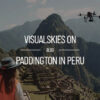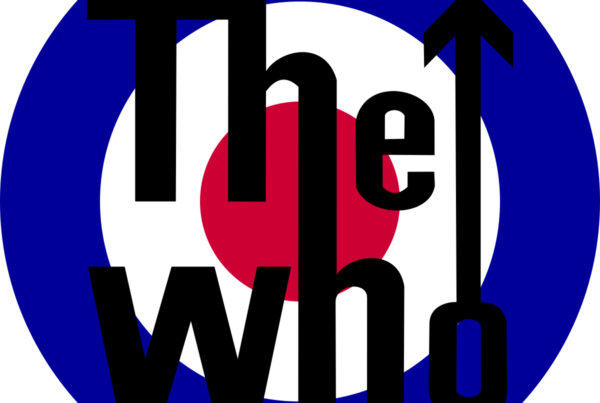Fusing of Spatial Computing and Volumetric Media
Visualskies are looking to the future of spatial computing, a world where digital content integrates seamlessly with our physical spaces, driven by Apple’s groundbreaking Vision Pro VR headset. For over 30+ years our team have been pioneers in volumetric media, 3D scanning and digitising the world around us. We are here to give you an in-depth look into the synergetic capabilities of these technologies and answer your burning questions. Get in contact to learn more about this match made in Heaven…
Visualskies to Unleash the Power of Spatial Computing
As a leader in immersive technology and capture, we are ready to step into a new era of volumetric media; in conjunction with Apple’s spatial media advancements. We can help applications leverage the Vision Reality Pro and harness the limitless potential of spatial computing and volumetric 3D scanning. We plan to shape the time ahead with a plethora of digital media experiences.
This integration would enable the creation and delivery of hyper-realistic, spatially aware content, encouraging users to engage with digital entities as if they were in the physical world. The potent combination of our expertise in volumetric media production and this groundbreaking technology stands to revolutionise how we perceive and interact with digital spaces, offering an unprecedented level of immersion.
Through our work, we can unlock and elevate the inherent capabilities of Apple’s spatial computing technology; ultimately driving the evolution of the VR and AR landscape, Something we are already accustomed to doing.
Imagine exploring in the Petra hinterlands below…
Volumetric Scan of Petra | With the University of Chicago
What are the similarities and differences between Spatial Media and Volumetric Media?
Spatial media and volumetric media represent two sides of the same coin, each contributing to the profound ways we interact with the digital world. Both are grounded in the concept of 3D digital experiences.
Synergised, they will transform the way we interact with digital content and empower a digital future. Powered by a device such as Apple’s first-ever 3D camera, these experiences, in conjunction with the richness and depth provided by volumetric media, are set to provide an infinite canvas for apps.
Spatial Computing
New and exciting future
Spatial media brings to life the dynamics of spatial computing, embedding digital elements and interfaces within our actual surroundings. This form of technology promotes interaction with digital media seamlessly within our physical reality. This fusion elevates our level of engagement and instils a heightened sense of immersion and interaction.
Volumetric Media
Our way, tried and tested
Volumetric media signifies the process of capturing and processing objects/environments from our physical world in a 3D digital format. These transformative methods transform tangible spaces and objects into their high-resolution digital counterparts using state-of-the-art techniques such as Photogrammetry and LiDAR.
AI Generated Concept Art | Using Our Scans
Reflections on Apple’s Vision Pro and the Surge of Volumetric Media in Film Production
On the evening of June 5th, I found myself, much like many others around the globe, tuning into the Apple conference. Settling down to watch from our new Berlin studio, ready to make notes on every nuance that might go on to define our industry’s roadmap at Visualskies.
In the realm of Hollywood and beyond, we have carved out a significant role for ourselves, serving many esteemed clients from the film industry.
As I watched the Apple conference trailer, I was happily surprised to see two major productions we had worked on prominently showcased – ‘Napoleon’ and ‘Ted Lasso.’ A testament to our impact and growing influence in the industry.
The ‘Napoleon’ production represented a growing trend we’re observing – an incredible surge in the use of 3D scanning across all major film productions. These aren’t small-scale operations anymore; we’re regularly scanning hundreds of sets, environments, landscapes, props, and even thousands of costumes and cast members for each production.
This is a marked change from just a few years ago, attributable, we believe, to three main trends:
PRE-VISUALISATION
We’re able to travel to remote locations, scan potential sets, and deliver extended reality experiences that aid production in remote discussions, logistics, and set design, with remarkable cost-effectiveness.
VIRTUAL PRODUCTION
Since the “Mandalorian” showcased the power of this technique, virtual production has become almost a standard in the industry. It provides a backup for potential pickups and complicated re-creations.
NEW VFX OPPORTUNITIES
By digitally capturing the creations of talented prop makers, costume creators and set designers, productions can accurately represent the original aesthetic while utilising it as a digital entity.
”Apple's continued foray into spatial computing is markedly different from the conventional video-game oriented approach of other headsets. As a volumetric media specialist, this shift is more than just interesting – it's pivotal for our industry.
Callum Rex ReidManaging Director, Visualskies Europe
With Apple’s introduction of an integrated feature to capture memories in full volumetric media with 3D spatial audio, it’s clear that the era of volumetric media, which I have eagerly anticipated, is genuinely on the horizon.
In many ways, the journey from the iPhone 1 to the Vision Pro encapsulates a significant chapter of my professional life.
In the period preceding the 2007 introduction of the iPhone 1, I was carving my path as a TV editor. My focus was on documentaries, aiming to present narratives in their most authentic, objective form. However, I soon realised the innate limitations of my beloved documentary medium.
This awareness brought to mind a core tenet of Cubism – that reality exists not merely from one viewpoint but from all simultaneously. This art movement taught us to acknowledge our subjective limitations, urging us to perceive beyond the singular perspective.
Could we capture and deliver the experience of our world dimensionally?
It seemed to me at the time that it might be the key to crafting more objective, truthful media. Whilst searching for solutions I discovered the work of Takeo Kanade at Carnegie Mellon University. His development of depth-sensing cameras in the mid-90s, culminating in the deployment of the EYE vision system in 2001, it was a revelation. It felt possible.
Takeo Kanade
Unity had just been launched a couple of years earlier and was also hinting at the potential of a more spatially oriented web experience. While the iPhone 1 wasn’t quite equipped for augmented reality (AR) at its launch, it was clear that it was setting the direction for future devices. That spatial computing and spatial experiences could eventually become mainstream. By capturing the world dimensionally, we could create candid moments that can be revisited from various perspectives. Providing not only a more immersive experience but also a more authentic one, free of the singular subjectivity imposed by traditional media.
To achieve this I looked to 3D scanning technologies at the time, but none of them could capture a candid moment in an instant or in a sequence of instances as a photograph or a movie could, nor was the quality up to where it needed to be.
So in 2008 my colleagues and I dove headfirst into what was at the time a fairly obscure objective.
Pioneering one of the first camera array solutions to use off-the-shelf cameras specifically designed to scan in an instant and to create volumetric media experiences. We began to prove in our own modest way that the 3D scan was not just a valuable tool to fit within a toolchain, but was a valuable content experience in its own right.
Apple’s Vision Pro is a big leap forward, but it’s still just the beginning. As the world of volumetric media evolves, we will continue pioneering and perfecting our craft, ready to capture the world in its full dimensional glory, and eager to see where this journey takes us next.
Here’s to a future filled with dimension, depth, and the promise of new horizons.
How will Visualskies use Spatial computing?
Visualskies stands at the intersection of technology and creativity, embracing cutting-edge advancements in spatial computing and volumetric media. Our expertise in 3D scanning technology and volumetric capture has positioned us to be at the forefront of new and emerging technologies in the AR space.
With the advent of devices like Apple’s Vision Pro, we see vast potential for the application of our services. The 3D capture capabilities of our teams worldwide align perfectly with the spatial computing focus of the Vision Pro. We offer innovative solutions allowing us to create incredibly detailed and accurate digital reproductions of physical spaces and objects.
We will step in for any developers, creators and pioneers looking to transform their experiences into ones that can fully utilise the new technology. Specialising in adventure we can and have transported viewers to places and experiences they couldn’t otherwise reach.
High Resolution Volumetric Media
Filter
WHERE TO FIND US?
Visualskies is proud to offer our expert Photogrammetry services for VFX across multiple locations worldwide. Our presence in key cities enables us to provide prompt and efficient service to our clients. You can find us in the following locations.
Volumetric and Spatial Media Studio London
5 Havelock Terrace
Battersea
London
SW8 4AS
United Kingdom











